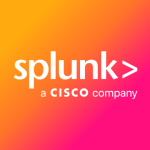We log everything. Anything that goes wrong, we want to make sure that we are able to see the reason why. Therefore, we check metrics around CPU usage, RAM usage, etc.
It's a different way of thinking. Before, we were with a big, monolithic app in the beginning before fully transitioning over to AWS Services, which has been breaking it down into a microservices architecture. It has allowed us to look at it and debug out from a different perspective. Previously, we were going in and looking at server logs, logging into SSH toolbox and debugging manually there. It puts everything in one place, so everyone has one center has one center tool to look at.
For what we're using it for, and having seen the other side of things, where we were debugging and looking into logs manually, then trying to run an analysis on them, it was a painful process. Looking at it from that perspective, it makes things a lot more user-friendly if you are using a tool like this. That is just been my experience with it personally, which is nice.
It is tool for the job. It does what it's meant for and does what it is supposed to, which is good.
From a debugging perspective, when we look at things, we want to ensure that we know exactly what is happening at a certain point in time. It provides us a reference for being able to go back and look at data at a certain point, analyze it, then determine if something was the root cause.
When compared with other tools, the experience needs improvement. I would like them to build out the interactions and make them friendlier.
So far, so good. I know there are a lot of competing tools out there. For what it is and what we've used it for, it has been good.
I have never had any issues, so I haven't had to contact them.
There is time savings. People's times have been cut in half using this solution because we were previously doing a lot of that manual work. Now, it's a lot more automated, and the data is just there.
We used a different tools out there, like New Relic. Dynatrace is good, but there are features which other tools provide that it doesn't.
Do some research. There are a lot of tools out there with a lot of features, which people have bought into it. Make sure to get the right tool for the job. When you do bring a tool on, take it for a trial run first, then see if it is giving you the value which you are looking for.















